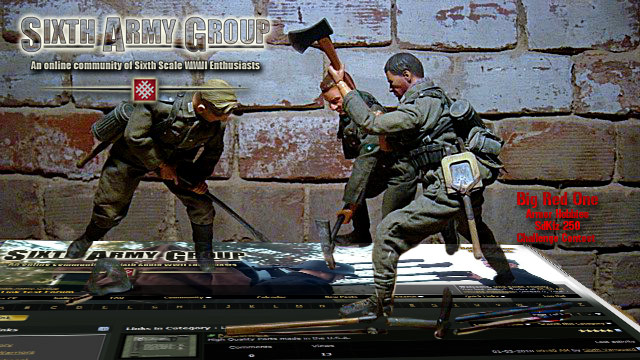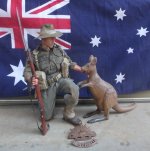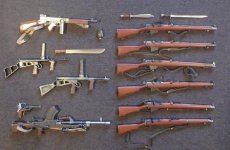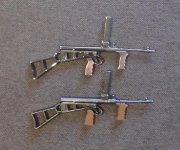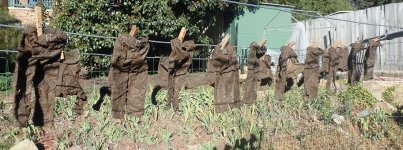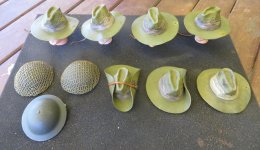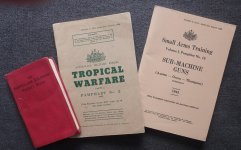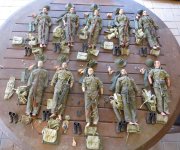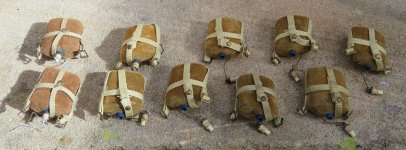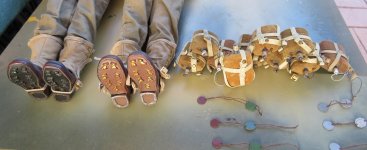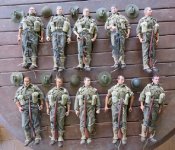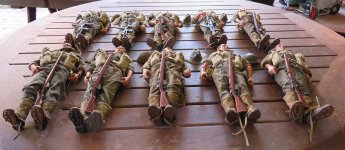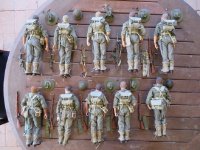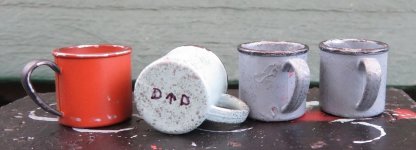SteveKrieg
Company Commander
G'day all,
Now for something a little closer to my heart - the first of a ten figure Australian Army infantry section circa '42-43 SWPA (advance to Buna-Gona). Armed with his trusty .303 SMLE MkIII, the Australian soldier was by no means (initially) the experienced jungle fighter that legend and myth dispels as they were just as unfamiliar with the foreboding environment as other Allied nations involved and that of his enemy - The Japanese (who just happened to adapt better to the terrain that his adversary). Before the arrival of the 2 Australian Imperial Force - 2AIF - (who were brought back from the Desert War), the militia were the first in action against the Japanese in New Guinea and despite being ill-prepared they did a grand job. The regular battalions of the 2AIF arrived in their desert attire which soon proved useless in the 'green' and many began to dye their clothing as a result. The 'Digger' featured wears the iconic Aussie slouch hat, improved clothing designed for the environment and wears a mix of British/Australian/American clothing and equipment. The 'Rising Sun' badge (3rd Pattern) and 'AUSTRALIA' shoulder title are from my own collection which I found on Shaggy Ridge back in 1993. More to follow...enjoy, Steve
Now for something a little closer to my heart - the first of a ten figure Australian Army infantry section circa '42-43 SWPA (advance to Buna-Gona). Armed with his trusty .303 SMLE MkIII, the Australian soldier was by no means (initially) the experienced jungle fighter that legend and myth dispels as they were just as unfamiliar with the foreboding environment as other Allied nations involved and that of his enemy - The Japanese (who just happened to adapt better to the terrain that his adversary). Before the arrival of the 2 Australian Imperial Force - 2AIF - (who were brought back from the Desert War), the militia were the first in action against the Japanese in New Guinea and despite being ill-prepared they did a grand job. The regular battalions of the 2AIF arrived in their desert attire which soon proved useless in the 'green' and many began to dye their clothing as a result. The 'Digger' featured wears the iconic Aussie slouch hat, improved clothing designed for the environment and wears a mix of British/Australian/American clothing and equipment. The 'Rising Sun' badge (3rd Pattern) and 'AUSTRALIA' shoulder title are from my own collection which I found on Shaggy Ridge back in 1993. More to follow...enjoy, Steve
